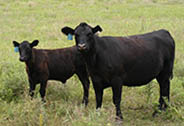
Feed Grade Antibiotics
By Dr. Brian Lubbers
It is nearly impossible to attend a CE meeting or open a veterinary publication without seeing these three letters: V - F - D. And yes, I have contributed to the discussions too because now is the time to prepare for the changing regulations, not December 2016. (A link to an example discussion follows: http://bit.ly/age-of-accountability.)

|
In talking with practitioners, many are focused on the logistics of implementing the veterinary feed directive. “How will I address the record-keeping requirements?” and “Which VFD form do I use?” are common questions that we, as a profession, are working through. But in the spirit of preparedness, I think there is another question we should also be asking: “How will I deny a VFD?”. The use of feed grade antibiotics for extra label purposes has never been legal. This means that antibiotics cannot be used in feed for anything not specifically on the drug label, including:
- Different species
- Different production classes
- Different disease indication
- Different dose, route, duration or frequency
- Different drug combinations (or any combination, if none are specifically approved)
For example, there are currently no feed-grade tetracycline products labeled for treatment of footrot in cattle. This has never been a legal use and under the new regulations both veterinarians and feed distributors are responsible for denying such use.
One of the opportunities that will come with the new antibiotic regulations is that we, as veterinarians, will have is a more detailed knowledge of what is being done on our producer’s operations. The real opportunity to understand what clients are using for which diseases is now, not when the herd health problem occurs (and becomes compounded by unfamiliarity with a regulatory process). Issuing a valid VFD isn’t the only goal; it is another tool in helping our clients raise a safe, wholesome, and profitable food product.
Brian Lubbers, DVM, PhD is the director of the KSVDL Microbiology Laboratory and a board certified clinical pharmacologist at KSVDL.
Next Article: Maximizing the Diagnostic Potential of Skin Biopsies
Return to Index